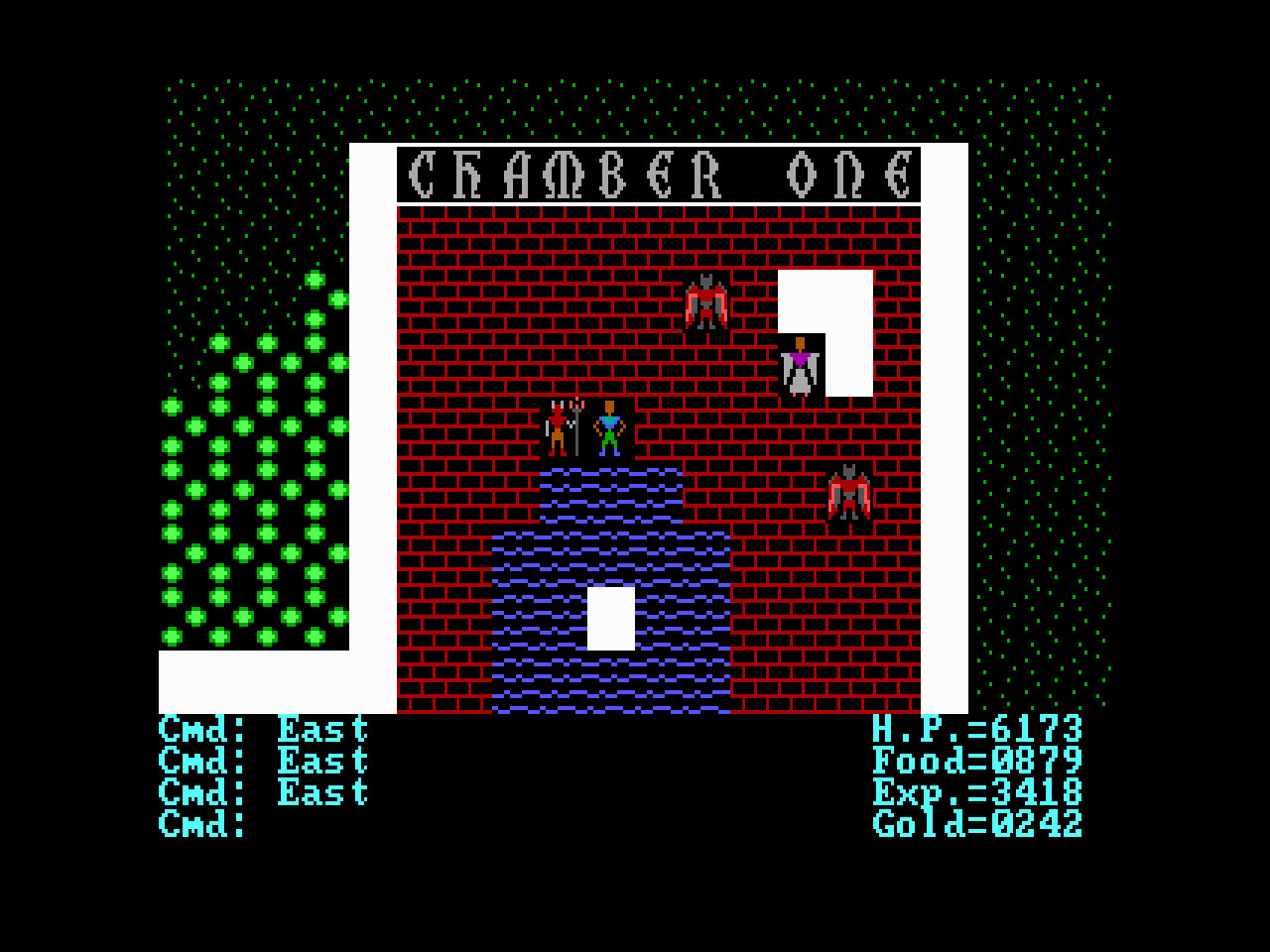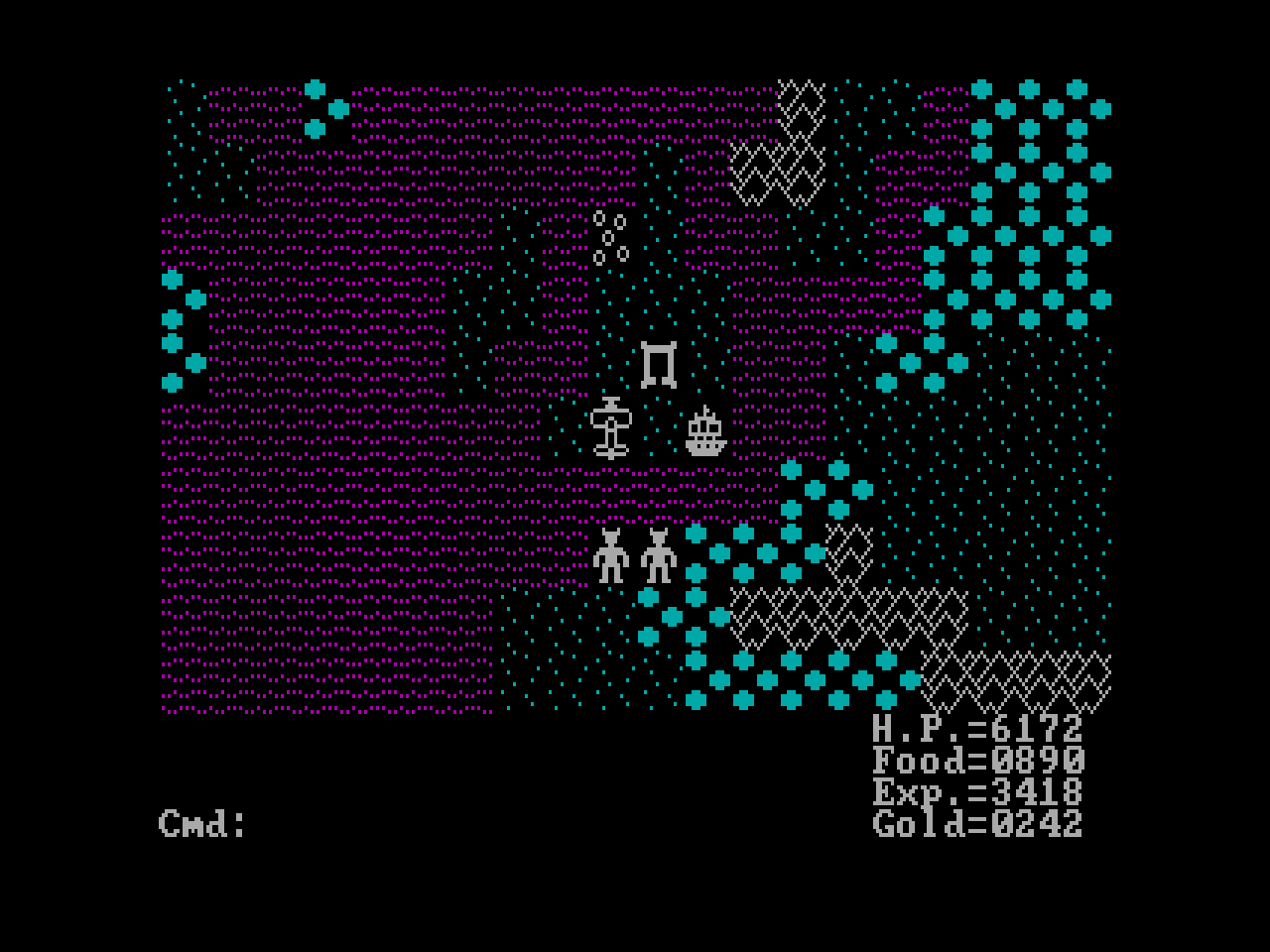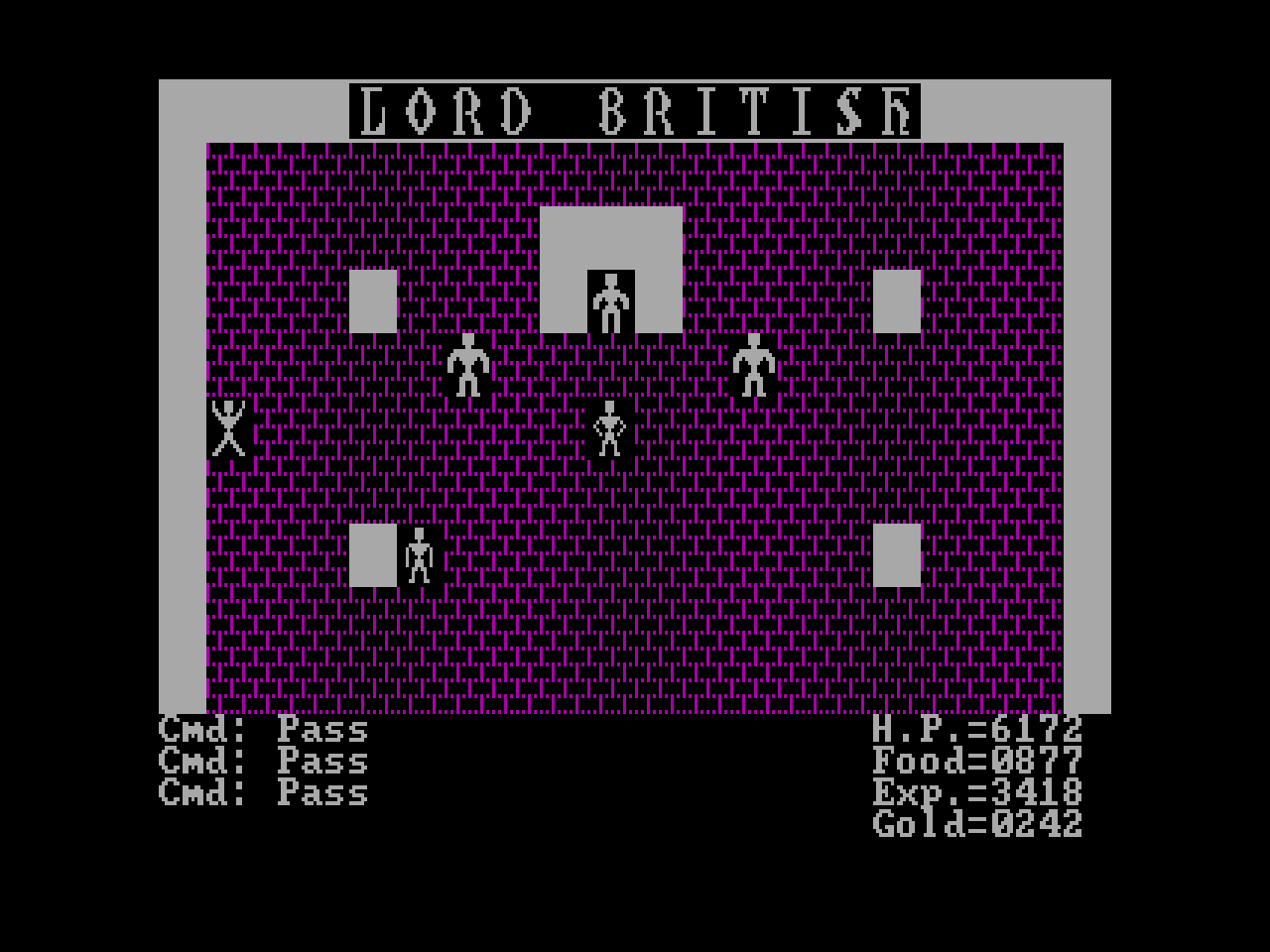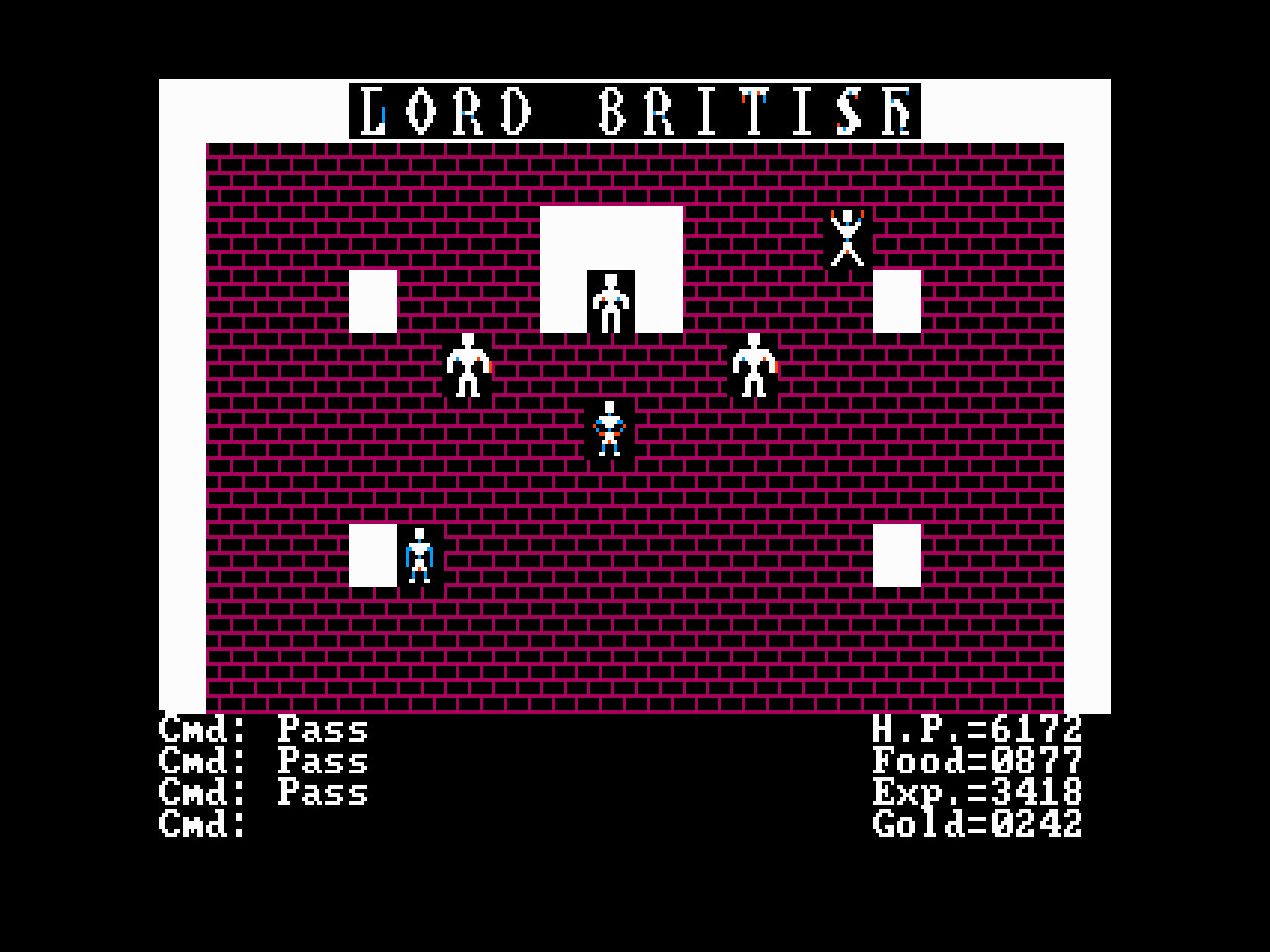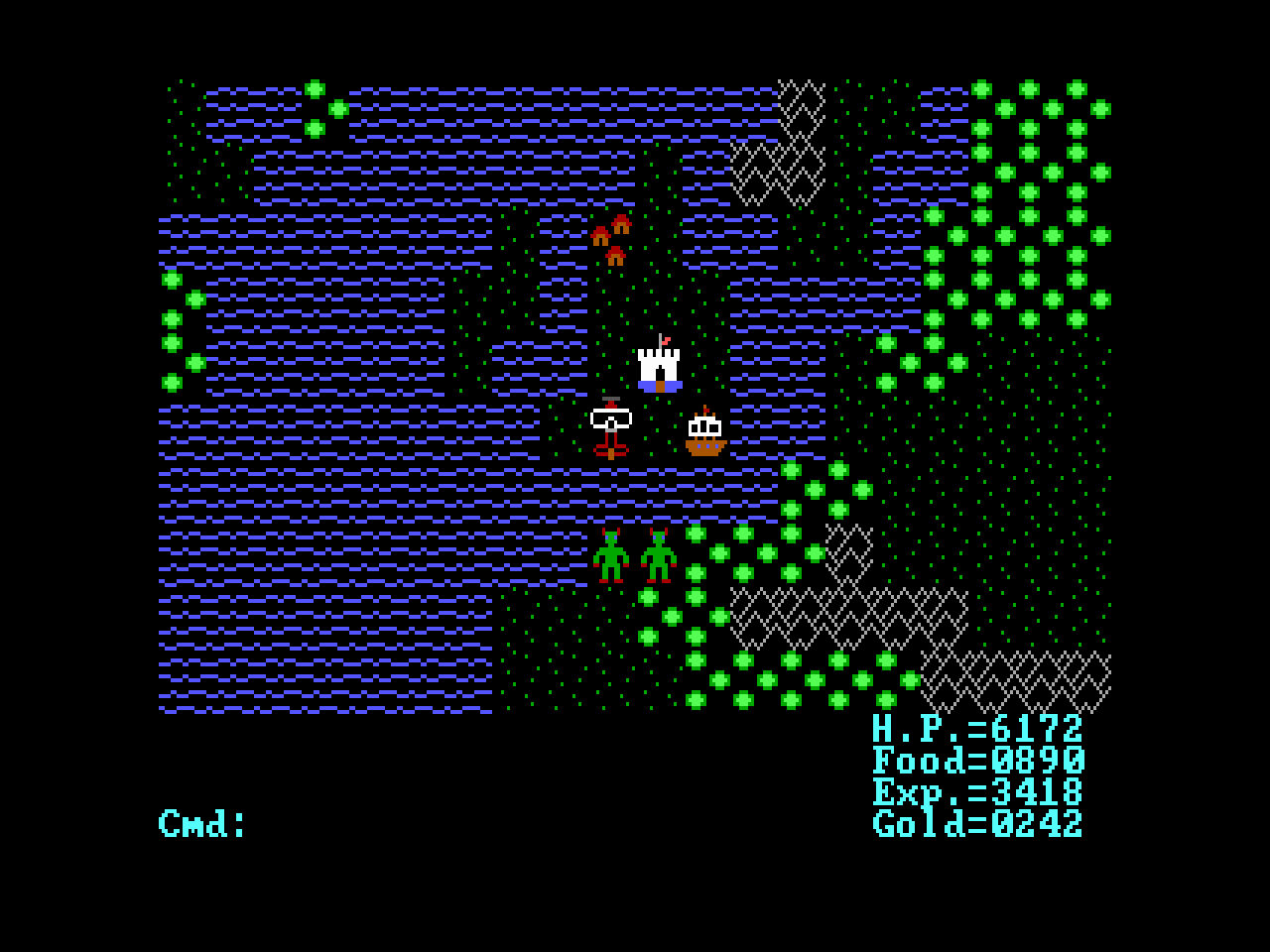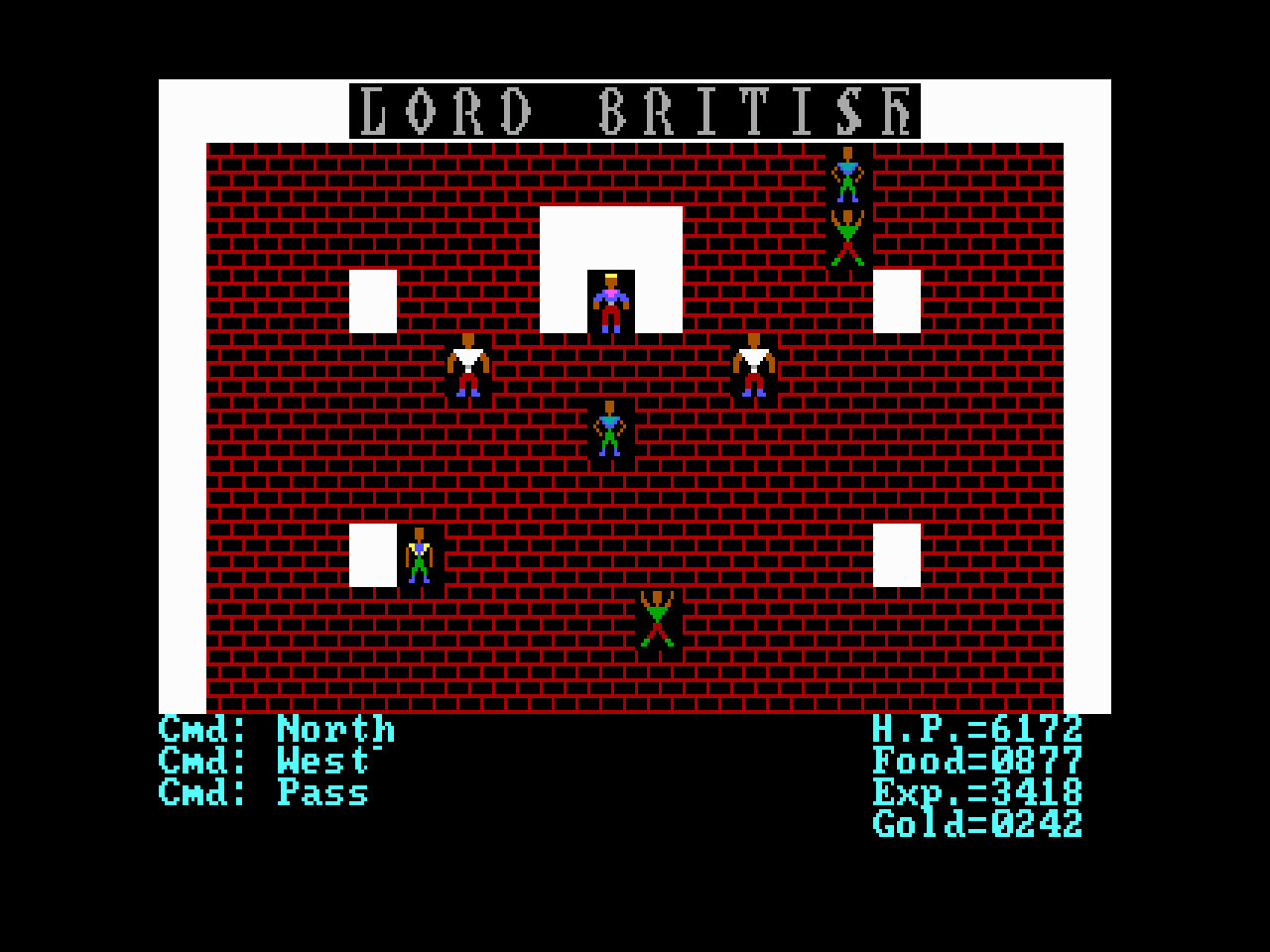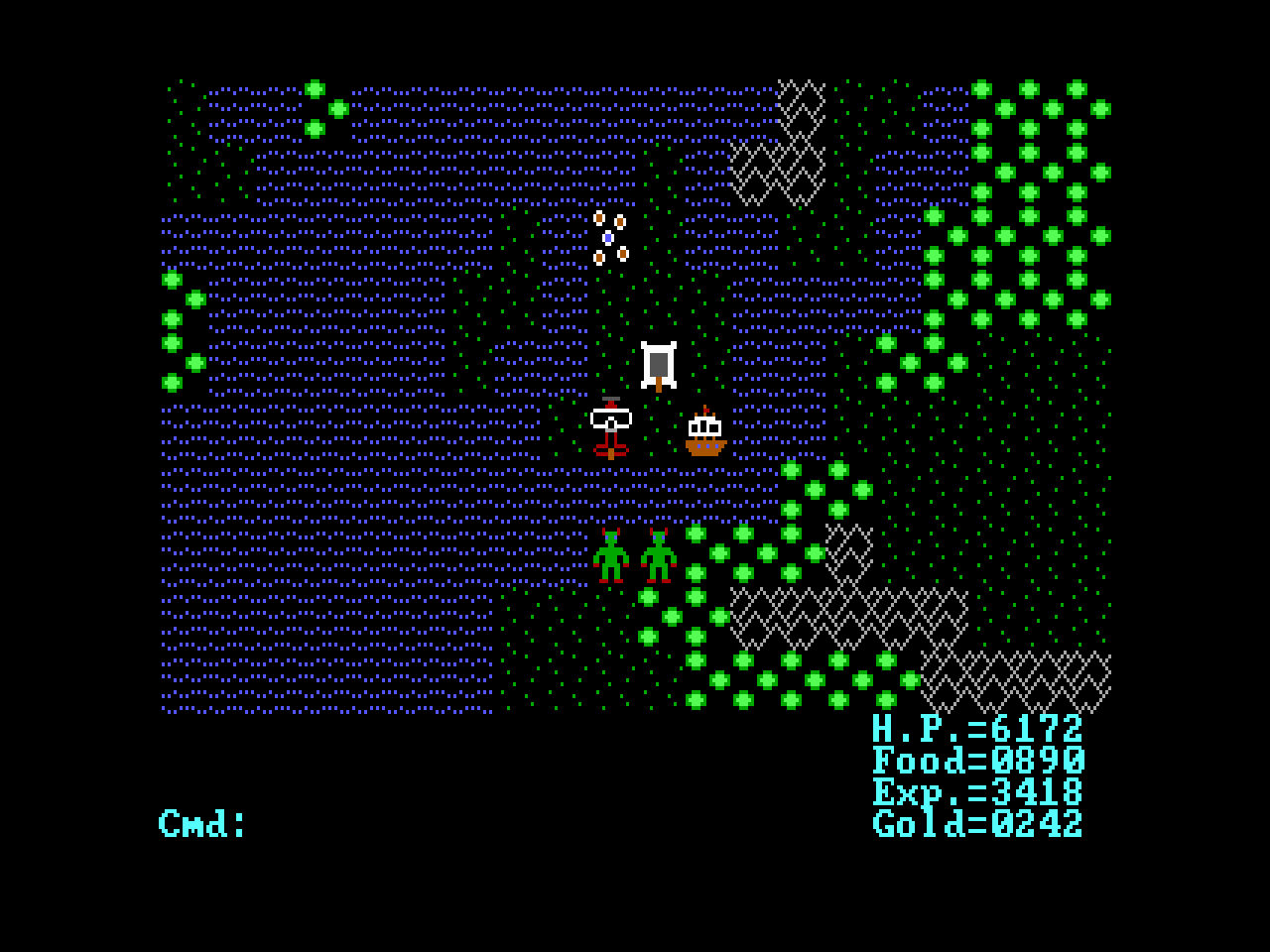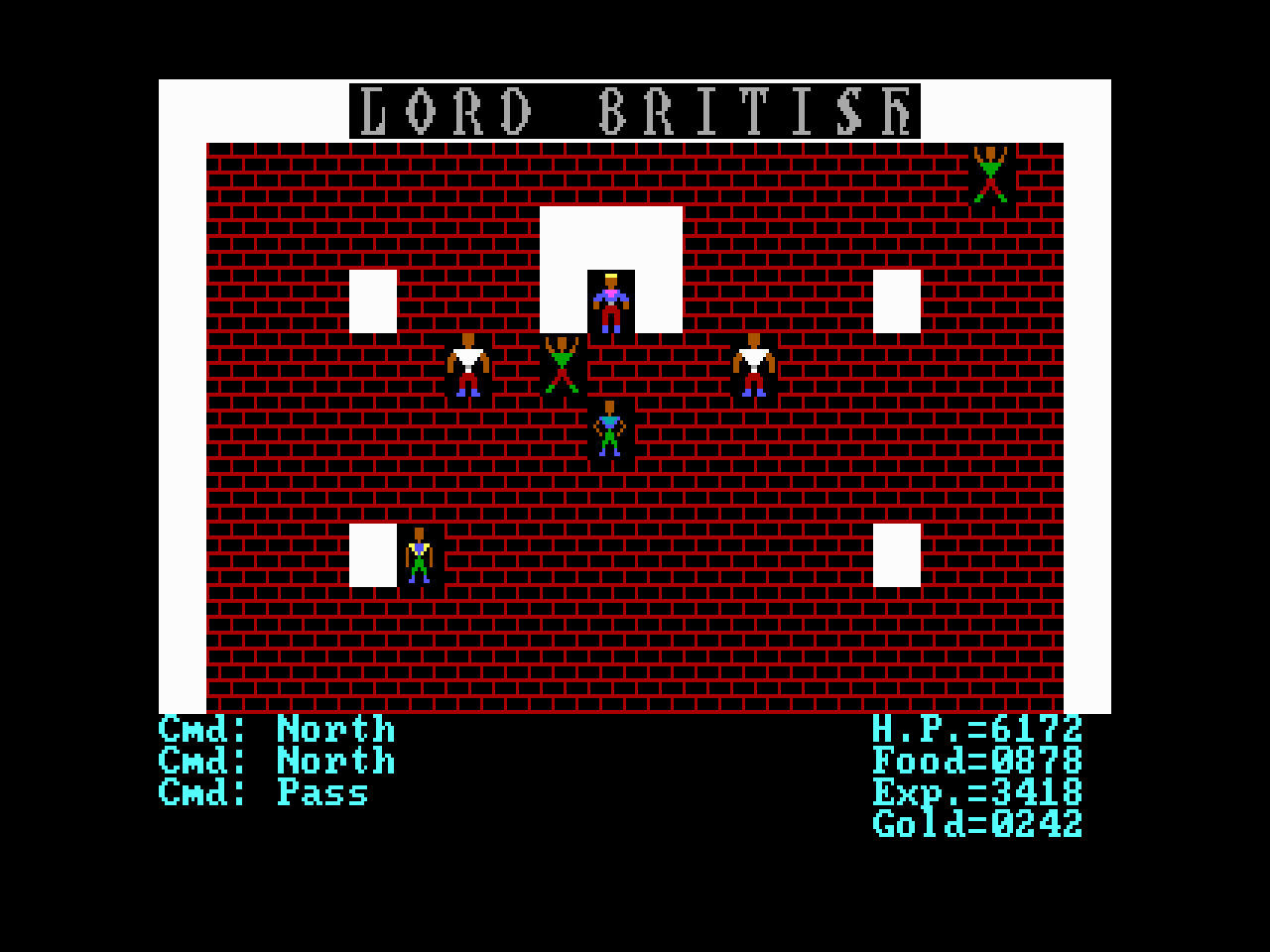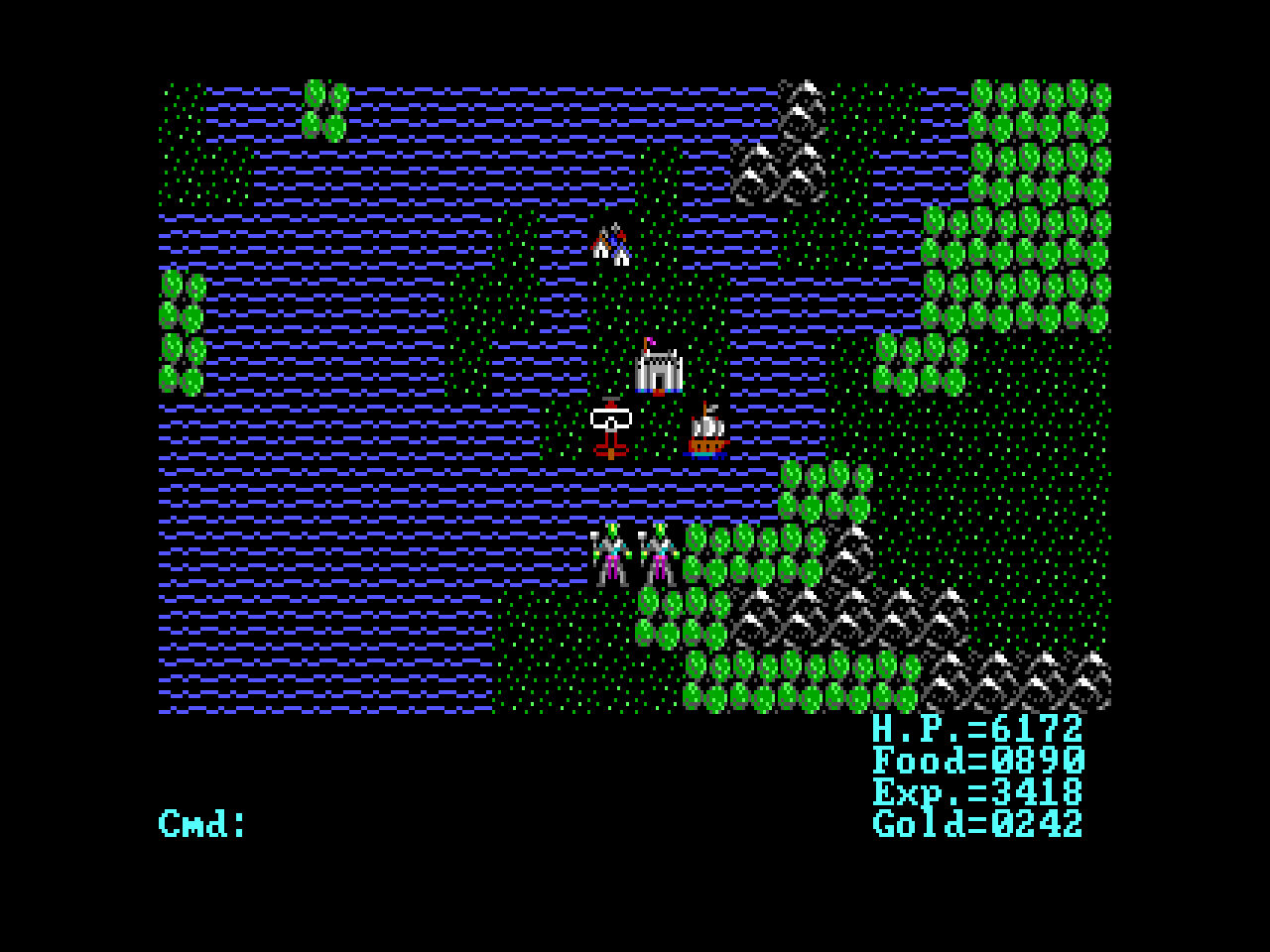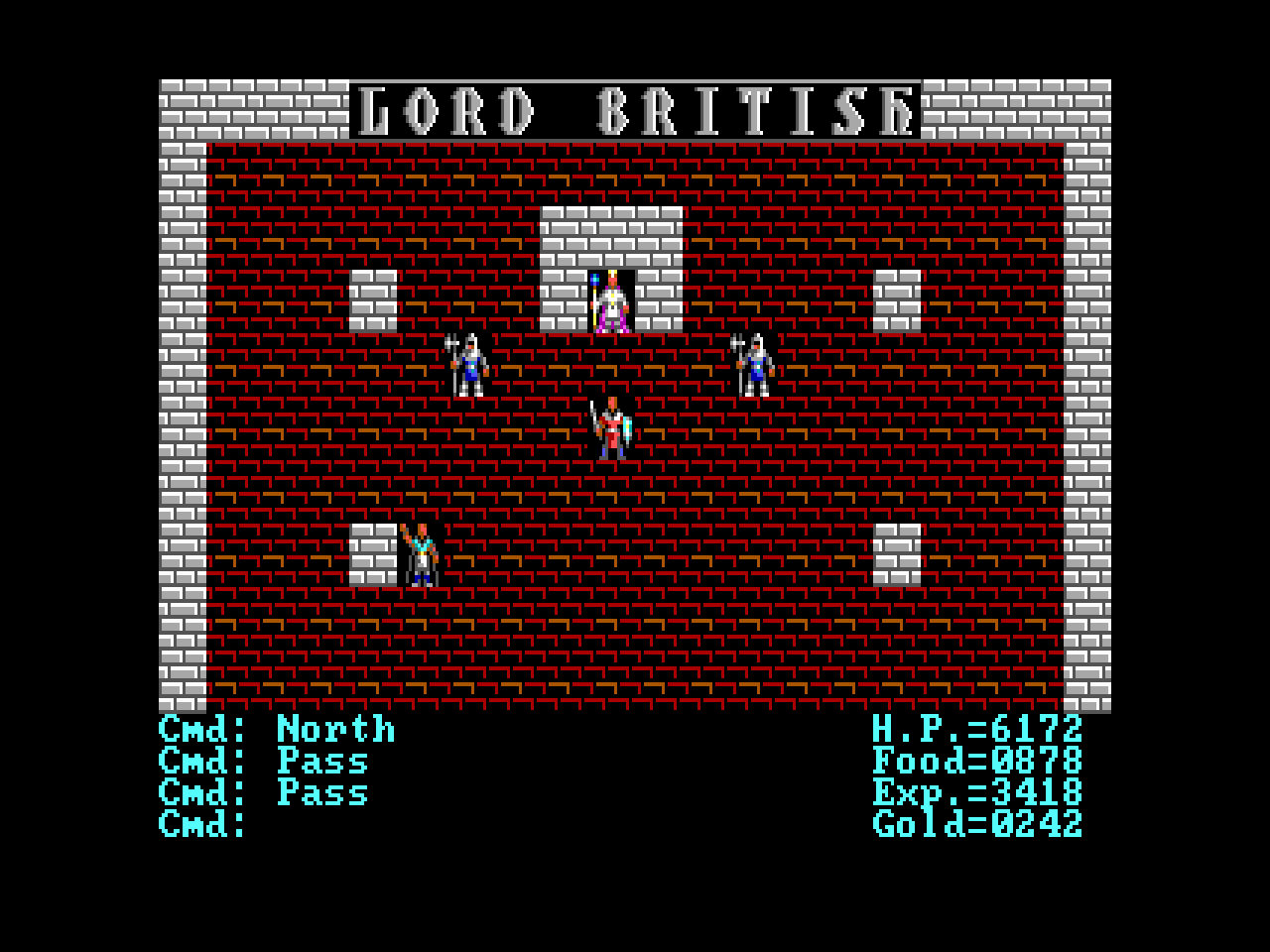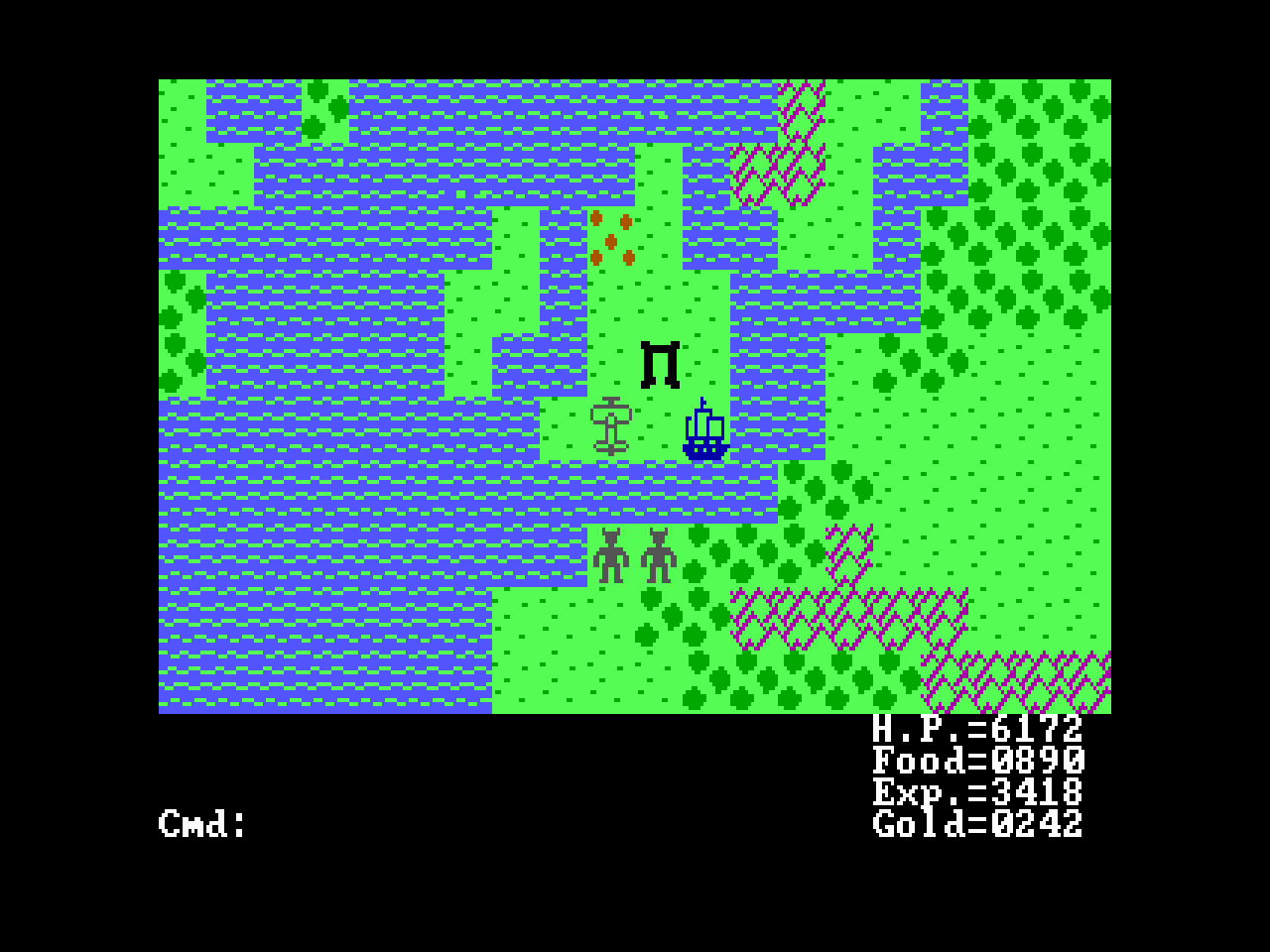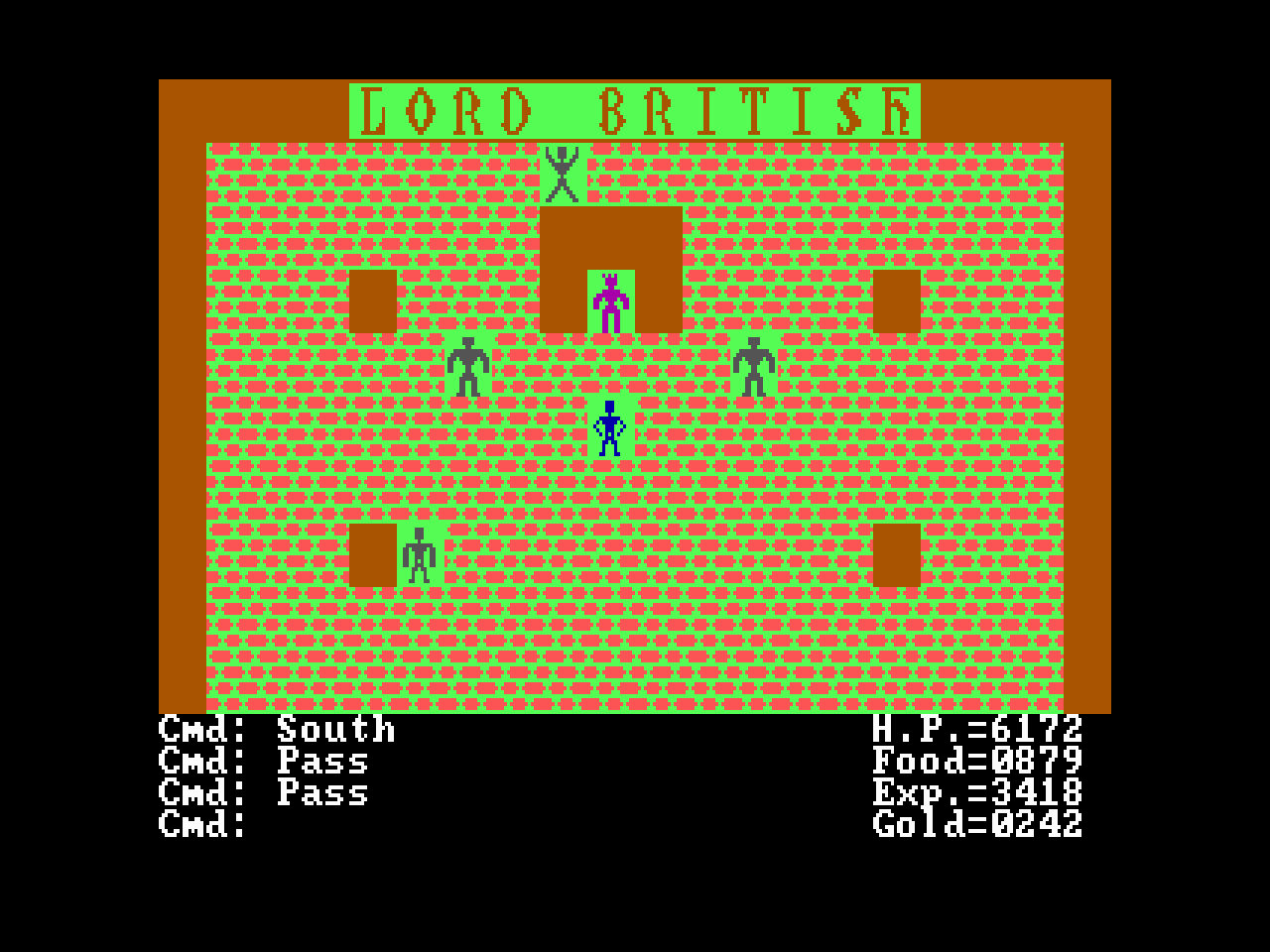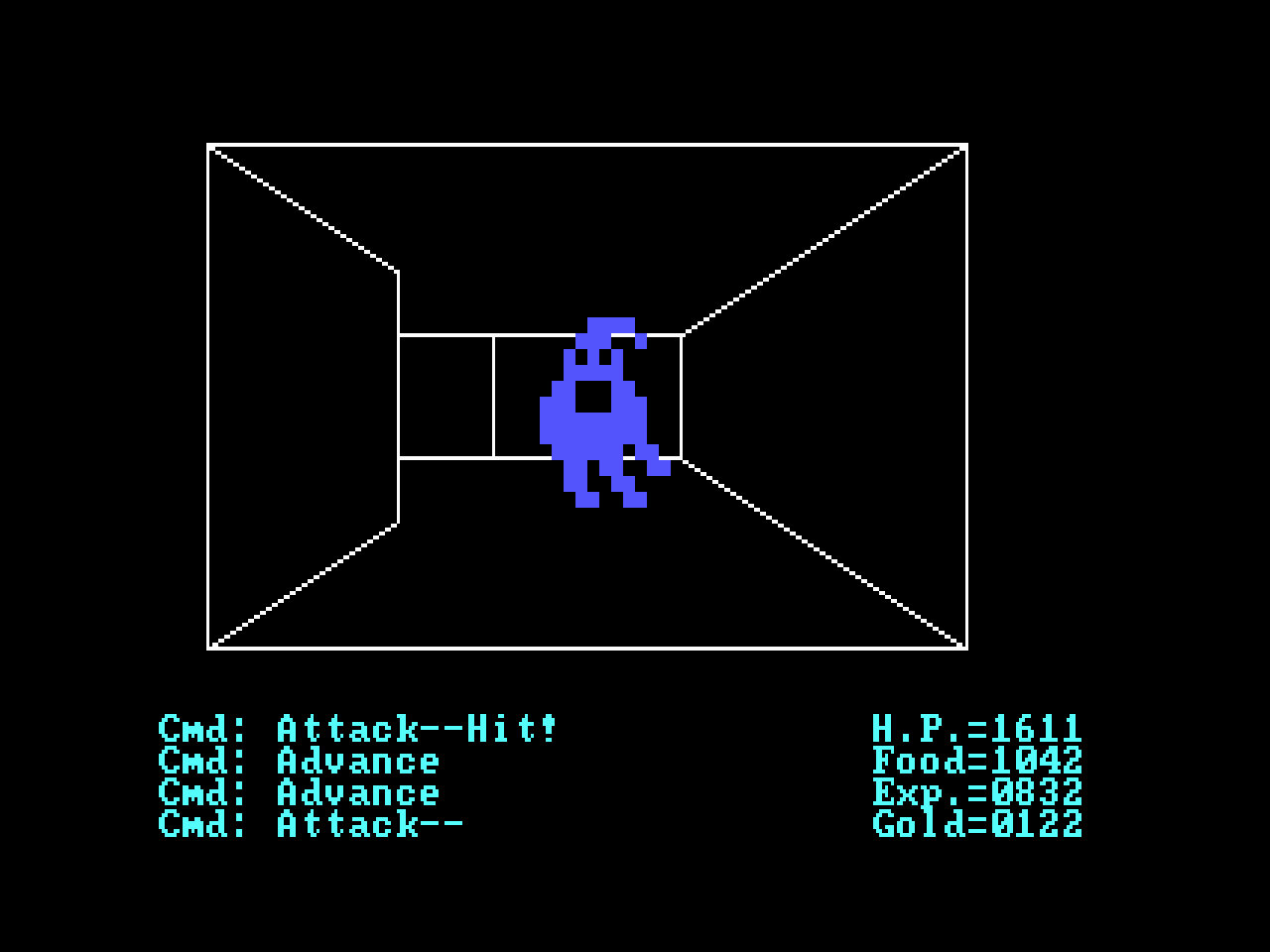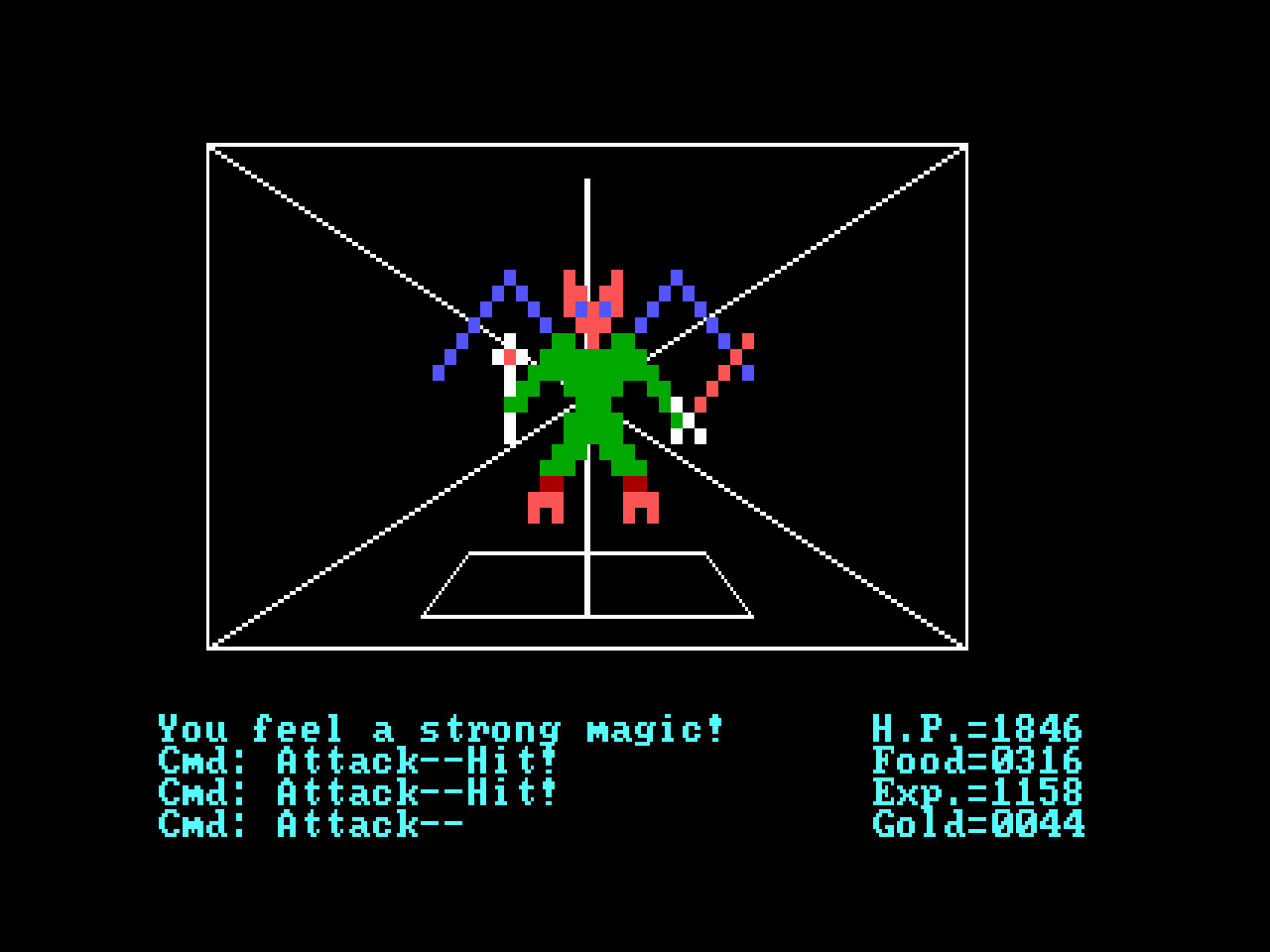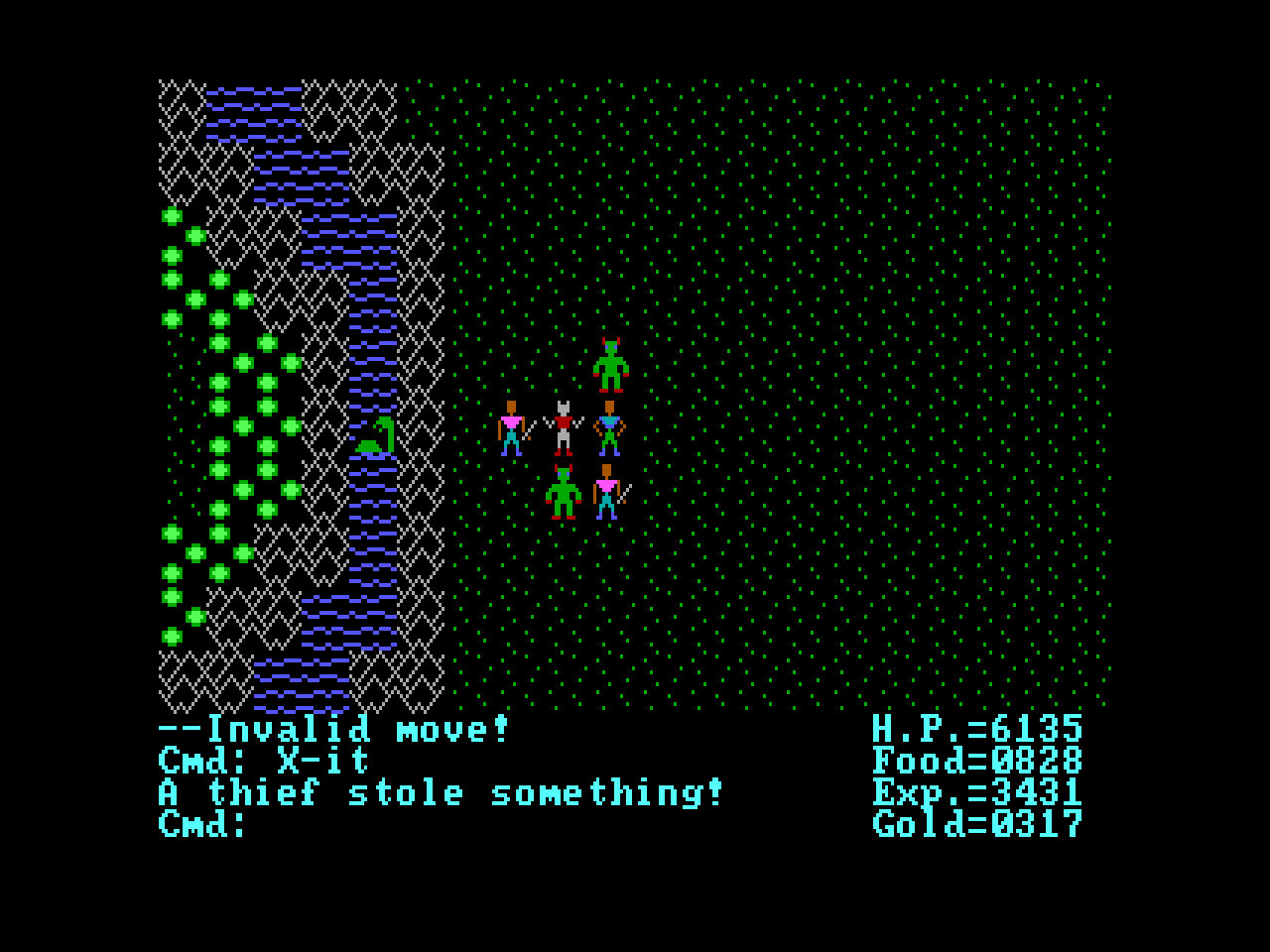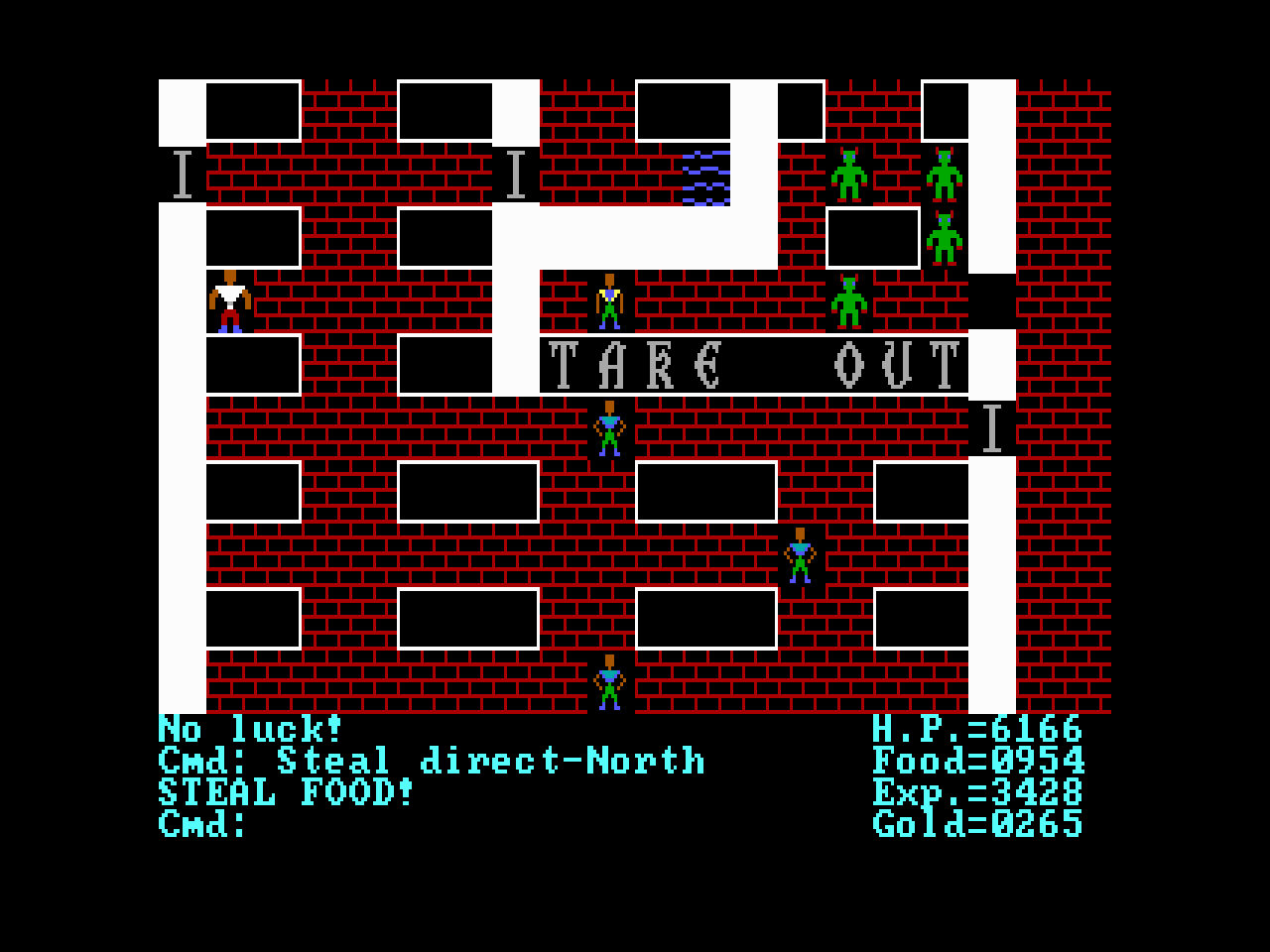Introduction
After playing the remake of Ultima I for the FM Towns, I felt like playing its sequel, Ultima II: The Revenge of the Enchantress. The game was released on August 24, 1982, and like its predecessor it was initially developed for the Apple II, since it was the platform Richard Garriott, Ultima’s creator, had most experience in programming. Today we are talking about the IBM-PC port of the game, also released in 1982 and bought on GOG.
According to the book Through the Moongate. The Story of Richard Garriott, Origin Systems Inc. and Ultima: Part 1 - From Akalabeth to Ultima VI, by Andrea Contato, Garriott left his former publisher, California Pacific Computer Company as it failed to continue to pay his shares in the sales of Akalabeth and Ultima I. But finding a new home for Ultima wasn’t an easy task for the young developer (he was 21 at the time), since most publishers didn’t agree with his demands, despite his track record. Richard wanted Ultima II’s packaging to have more flair, including many types of feelies, like a cloth map of earth and detailed manuals. At the time this was a new idea and most publishers weren’t very keen of risking their money on it. Richard was inspired by the release of the first game of the prolific Wizardry series, as he wanted his game to have a professional packaging of the same quality.
In the end, Garriott was able to secure a contract with Sierra Online, at the time a promising player on the game publishing market. Besides being able to develop the game the way he wanted, Richard also secured the right to include the desired feelies with the game: a cloth map, a 16-page manual, a paper galactic map with the coordinates of the other planets, and a postcard to register the product, while the game came in a 5 1⁄4-inch disk. As for Sierra, they got the rights for publishing Akalabeth and Ultima I and a time frame for Garriott to deliver the game, April 1982.
Taking into account Garriott started to develop the game right after he finished working on the first Ultima and the delivery date for the second one, the development of Ultima II took roughly a year. Still, the game feels emptier than its predecessor and has more bugs, some truly game breaking. Nonetheless, it had good sales numbers and favorable reviews.
Unfortunately, the relationship between Sierra and Ultima wouldn’t last long, as the publisher didn’t pay Garriott’s royalties to the IBM port of Ultima II. This event alongside changes on how Sierra managed its employees and contractors made Richard, alongside his father and brother, to start Origin Systems, Inc. in 1983, what would function as Ultima’s publisher and developer even after it was purchased by Electronic Arts, in 1992.
So, how does it fare against the first game? Let’s find out.
The Narrative
After Mondain’s demise at the hands of the Stranger in Ultima I, the fabric of space and time was affected, resulting in the creation of time doors, portals that lead those who crosses them to the far future or to a distant past. Through them it’s possible to go to four different time periods:
- Legends, a past so distant that it only exists in myths;
- Pangea, a past before the continental drift started;
- 1423 BC the medieval past;
- AD 1990 or the present when the Stranger’s journey begins;
- Aftermath or AD 2112, after the destruction of earth, when the remains of humanity thrive.
The time doors were essential to humanity’s survival after a war ravaged the world, as people could escape it by moving through time. The responsible for the calamity was Minax the sorceress. She is Mondain’s secret apprentice, who studied with the evil archmage since childhood. She spread lies and anxiety around the world, what culminated on humanity turning against itself.
Lord British and his allies recruit the Stranger, asking him to travel in time back to Legends to destroy Minax, stopping her evil influence from destroying earth. It won’t be an easy task as besides traveling through time, the stranger needs to visit other planets to find the means to enter Shadowguard, the sorceress evil fortress.
It’s a complex story but it still similar to the last game (go on a space adventure, travel in time to eliminate the ultimate evil, etc.). Still, Ultima II tried to have more personality, like having jokes, pop culture references and the developers’ friends and family as NPCs. They will say something different than the other common characters, like Dupre the Swashbuckler, who asks, “Wanna buy a duck?”. Interestingly, that could have originated a cool game mechanic. Here is Garriott telling the story.
Another fun tidbit is that the time-traveling plot was inspired by the film Time Bandits, directed by Terry Gilliam, from Monty Python fame.
Besides the interesting setup and plenty material for trivia, there isn’t much on terms of actual plot. You get a few crypt clues from NPCs and seers and go on acquiring money and items for the final fight against Minax, so storytelling-wise the game is barebones. That’s expected from these early CRPG games, as the developers focused more on gameplay than on the narrative.
Presentation
As you boot the game, there is a fun introduction to what you can expect from your adventure. Like the last game, there is no music and every sound have the PC speaker quality.
When the game starts, you are presented to a bleak environment, lacking vivid colors and surrounded by shadows. Minax definitely made the world look worse than whatever Mondain did in the former game.
But why are the graphics like this? According to Hardcore gaming 101 article on the game:
The graphics use the four-color CGA standard and are intended for a CGA composite monitor, which would display colors similar to the Apple II original. On any other sort of monitor, which players then and now are overwhelmingly likely to be using, the game instead uses an ugly magenta/teal/purple color scheme which is hard on the eyes.
But before you resign yourself into understanding what’s what, there is good news! There is a patch that besides fixing some bugs, it also lets you choose better video settings. I will talk about it later, but for now take a look:
1 - CGA (4-color)
| 2 - Composite CGA (16-color) |
3 - EGA (16-color)
0 - Standard EGA Tileset
1 - Classic EGA Tileset
2 - Alternate EGA Tileset
3 - Commodore 64 Tileset
But even if the game becomes more pleasant to the eyes, still there is no animation for character sprites in the overworld. As for the dungeons, they kept the wireframe aesthetics from the first game.
Mechanics
The Basics, Fighting and Exploring the world
You start by creating a character and choosing its attributes (strength, agility, stamina, charisma, wisdom and intelligence), their sex, class and name. As the game begins, your character will have a limited amount of HP, food and gold.
Similarly to the first game, battles are fought in real time but are overly simplistic, as you can only attack or run while a monster pursues you everywhere. There are no useful strategies or items to help you win a tougher enemy. Unfortunately, it’s the only way to acquire money in the game, so prepare to grind!
Ultima II is also split between a third-person overworld and first-person segments whenever you enter a dungeon. On the overworld, which feels big but also empty, you will find a few enemies, cities, villages, castles, the entrance to dungeons and time doors, that are used to travel in time. You can traverse them on foot or using vehicles like a horse or a plane. You can also visit nine other planets by stealing a rocket. Prepare yourself, because there is no place for morals in Ultima II.
The game has fewer dungeons than Ultima I, but now they were crafted by hand instead of being randomly generated. That’s a good trade off in my opinion. However, they became completely optional, as the plot doesn’t require you to go to any of them. You can raid them to find a few items that can be easily obtained elsewhere, or they can work as a diversion from the main plot if for some reason you wish to engage in the dull battles the game provides. I completely skipped them and I have no remorse.
Spells are sold in specialized shops, and you need to buy them in packs since they function as a consumable item. They have a limited use as only clerics and wizards can use magic, and it can only be cast inside dungeons. So, unless you feel like exploring one, these classes and magic are mostly useless.
Attributes and Gold
As you play the game, you will slowly discover that Ultima II simulates our social economic reality since money is the game’s most important resource. Without it you won’t go far in this harsh world. Without gold you can’t buy food, and your character will instantly die if left without any amount. Another use for gold is increasing HP, as you can only gain more by buying it from kings. Gone are acquiring life points from rescuing princesses or by killing monsters in dungeons. Also, without gold you can’t buy weapons, armor, spells and horses. Another important use is to buy tips from seers and barkeepers, what is necessary to have any kind of direction in this game if you don’t use guides.
You will also need money to increase your attributes. But you can’t pay and choose your desired upgrade, that would be too easy for a pioneer game from 1982. You must pay 100 gold to the hotelkeeper NPC in New San Antonio to have a chance to increase a random attribute. Sometimes you get it, sometimes you lose your money. It’s a terrible system as it forces you to save scum until you get what you want.
To sum everything up, you have an uninteresting battle system as the only way to acquire money, that is a resource necessary to make your character stronger, but that’s an aleatory system, in which the player loses control of their character and is also punished by not getting any stats increase or by raising a useless attribute. Yes, that is too much for me.
Maybe I’m too conditioned by traditional systems in which you kill enemies to gain experience points and level up your character. But it makes a lot more sense, as it represents how your character develops through completing missions and fighting. But what does buying attributes from a hotelkeeper represent? What’s the logic or meaning behind it?
Fortunately, you can use a real world cheat in the game: steal your way into a more comfortable life with better goods. It’s possible to steal food and almost all weapons and armor, as the game doesn’t punish you for doing it. Unfortunately, you can’t steal more HP, money or spells.
Old problems and modern solutions
The GOG release of Ultima 2 comes with a preconfigured DOSBox instance, but it isn’t well optimized, resulting in the game running too fast, making it hard to play. I was decreasing the number of cycles in DOSBox when I decided to search for information regarding this particular problem. Then I came across something incredible: the Exodus Project.
There you can find patches for some Ultima games, like the Ultima 2 Upgrade, that adds a lot of cool features, like new video modes, different tilesets that completely change the game’s appearance, saving the game while on a vehicle, a frame limiter so the game can be played as intended, corrects a few bugs and thankfully, lets you choose which stat you want to upgrade when offering gold to the hotelkeeper.
There are other improvements that you can read about on the project’s website. I think it’s a necessity if you plan on playing this game.
Final Thoughts
Ultima II is too similar to the previous title for my taste, but what really gets on my nerves are the random upgrades, the skippable dungeons, buying HP and the lackluster combat system. Thankfully, the fan upgrade made it a lot more tolerable and faster to play. Like its predecessor, after reading about its development and its role in the History of CRPGs and of computer gaming, I started to appreciate it more, but mostly on a historical perspective, not as a game that can be enjoyable nowadays. There are better adventures and dungeons to crawl elsewhere, with more interesting plots and gameplay.
If you wish to read more about the franchise’s History and its connections to the development of the CRPG genre, go read Through the Moongate. The Story of Richard Garriott, Origin Systems Inc. and Ultima: Part 1 - From Akalabeth to Ultima VI. It’s a quick and enjoyable book that I can’t recommend enough.
Final opinion: not recommended.


